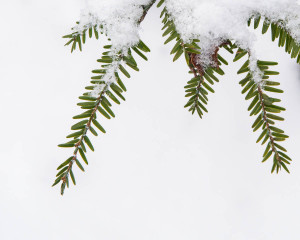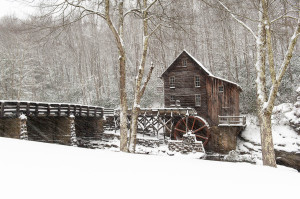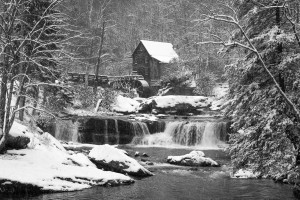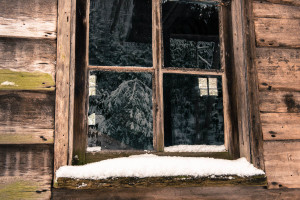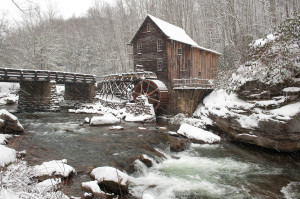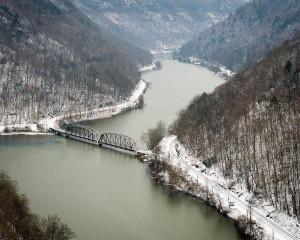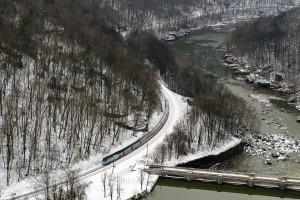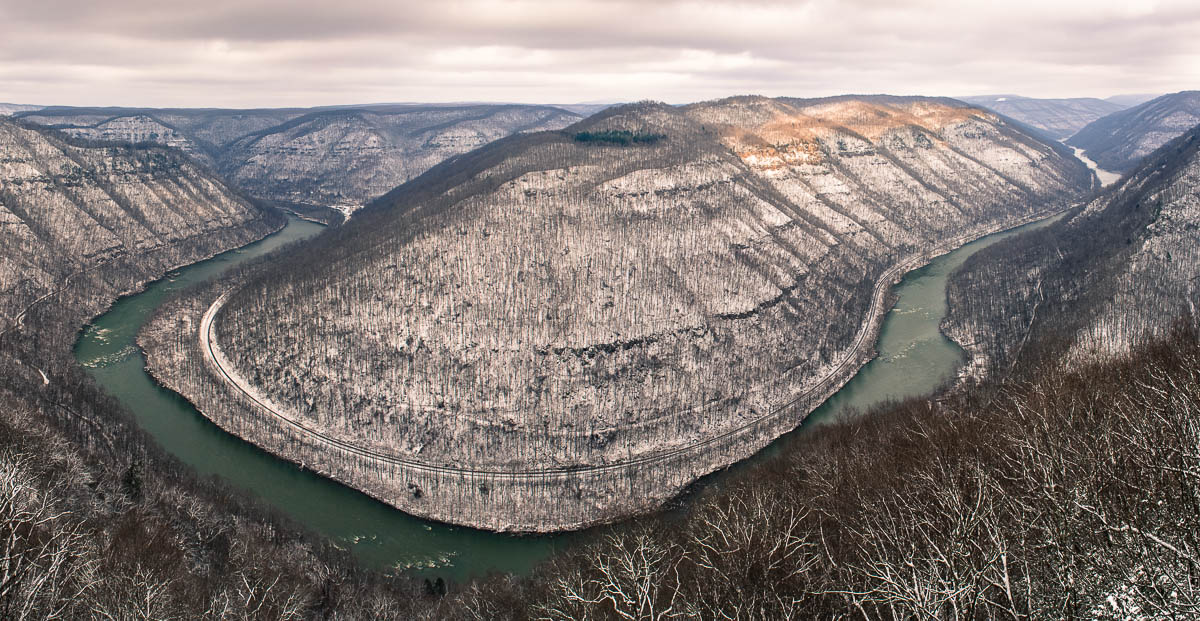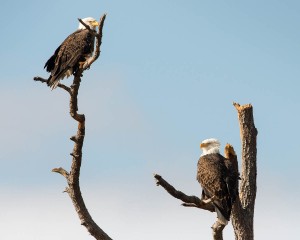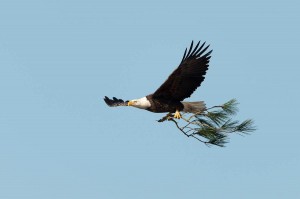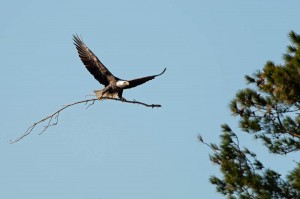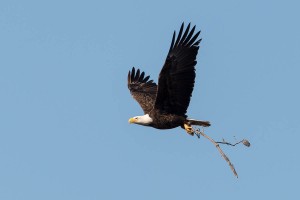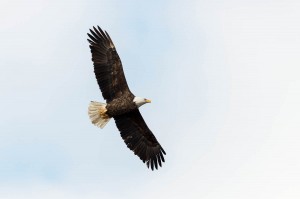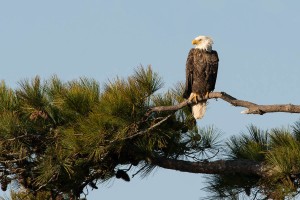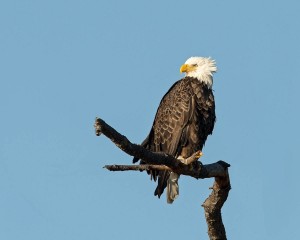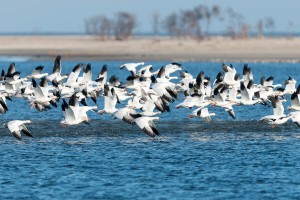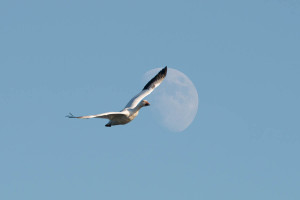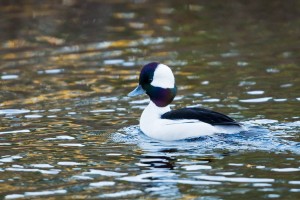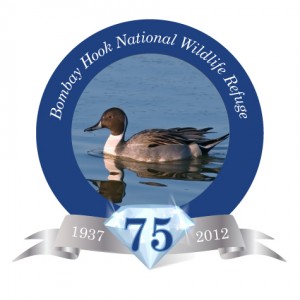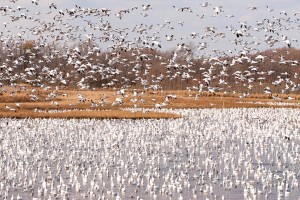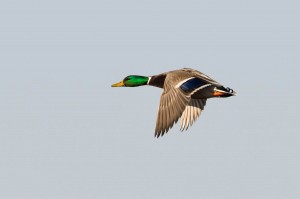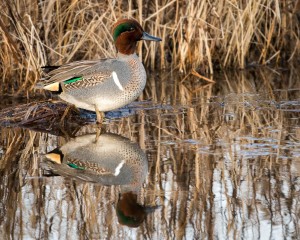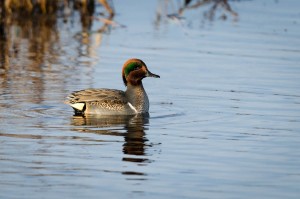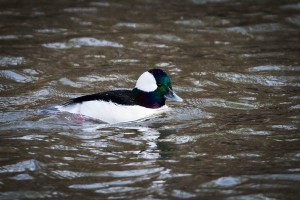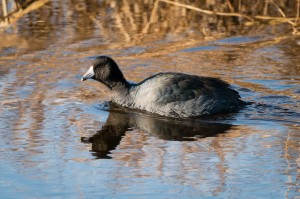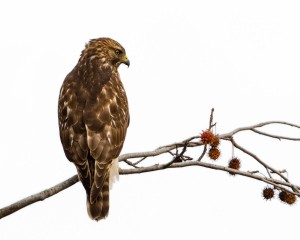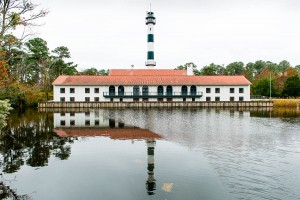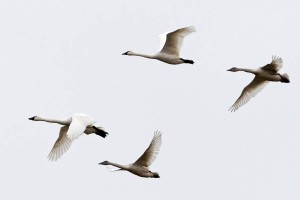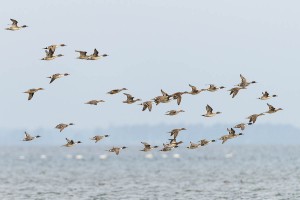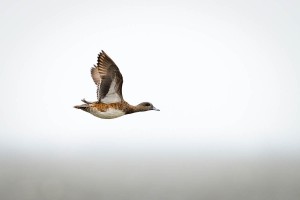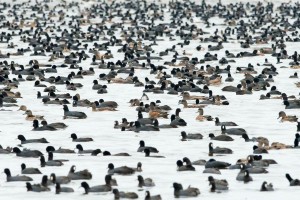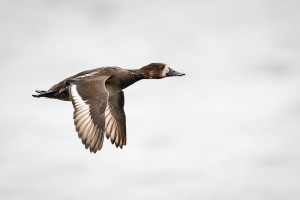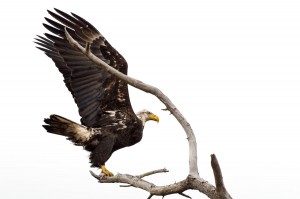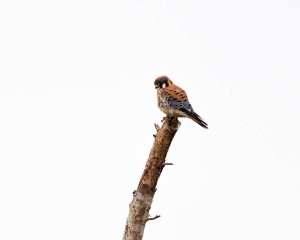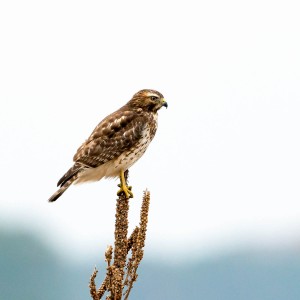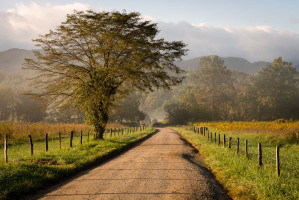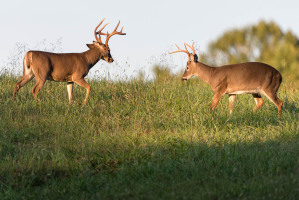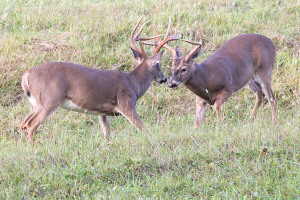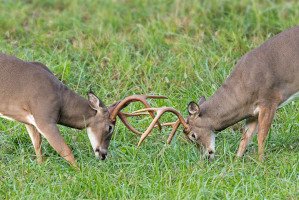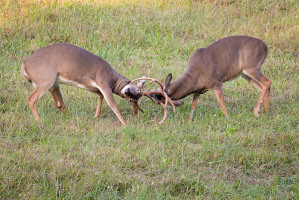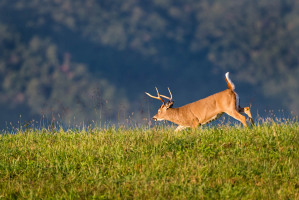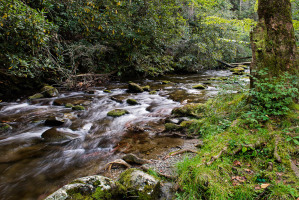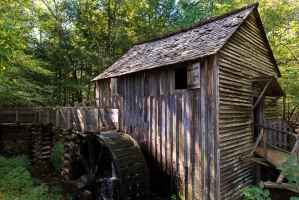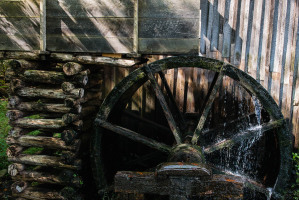Last weekend we took a drive up to West Virginia. The weather forecast called for snow in the mountains so we headed for the Beckley area.
Before reaching the West Virginia state line we took a brief detour just west of Covington, VA. 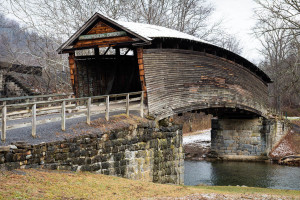
Near exit number 10 off of I-64 lies the oldest remaining covered bridge in Virginia. Built in 1857, the “Humpback Covered Bridge” spans Dunlap Creek and features a unique arched design. It was in use for 72 years until replaced by a steel truss bridge in 1929. The bridge still includes its original support beams and wood decking. Unfortunately, plenty of idiots have gone out of their way to prove their lack of appreciation for the structure by painting and carving their initials and graffiti all over it. Why people feel compelled to do this is beyond me. Somehow the dignity of the old bridge shines through in spite of this.
Back on the road we set our sights on our primary objective, Babcock State Park. Located northeast of Beckley and near the New River Gorge National River, the park consists of over 4,100 acres and one of the most photopraphed grist mills anywhere.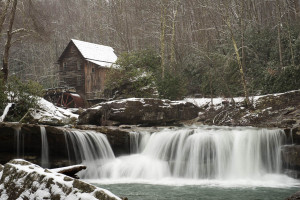
The Glade Creek Grist Mill was built in 1976 and is a reproduction of Cooper’s Mill which stood where the park’s admin building currently sits. The basic structure was constructed using parts from 3 other old mills, which were dismantled and moved to Babcock SP.
We arrived late in the afternoon. Heavy dark skies were already beginning to blanket the area in a soft layer of powdered snow. I took advantage of the low light conditions to make some long-exposure shots of the stream water. It’s hard to make a bad image of this mill. There are so many good positions and angles to shoot from.
Winter’s icy fingers crept down the mountains all through the night. We awoke the next morning and were greeted with 6 inches of snow and 20 to 30 mph winds.
The skies were still heavy and the snow continued to pile up.
The weather was supposed to change to partly cloudy by noon but, that never happened. The snow continued to fall and made the area quiet and muffled.
We arrived back at Babcock just after sunrise and found it untouched and serene. Everything in sight except the moving water was covered with snow.
The lack of direct sunlight gave my images the muted colors and almost black and white look that somehow seems to communicate the feeling of winter.
On this day the mill was locked and inactive. A glimpse in the window reveals little more than the reflections of the icy world outside.
If you look carefully at these images you can see the numerous streaks of snow falling when I snapped the shutter.
I could have wandered around the various trails in Babcock State Park all day but, we decided to explore the New River Gorge National River.
Hawks Nest State Park is a peak on Gauley Mountain in Ansted, WV. The overlook peers down on New River which is nearly 600 feet below.
An Amtrak passenger train rumbled through the valley far below. The distance makes It look like a toy train set.
The hydro-electric dam seen here was built during the Great Depression. It rerouted water through a tunnel under Gauley Mountain. Unfortunately, the area is rich in silica. This resulted in over 700 unprotected tunnel workers dying of silicosis. Known as the “Hawks Nest Incident“, it was one of the worst industrial disasters in American history.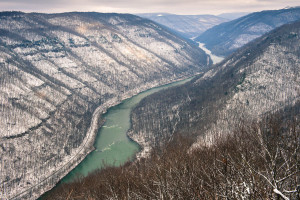
Grandview was our next stop. It’s part of the New River Gorge National River.
The aptly named “Grandview” features a main overlook that is situated 1,400 feet above New River. A horseshoe bend in the river results in a sweeping panoramic view. I’ll bet this is breathtaking on a bright colorful fall day.
Our brief winter visit to West Virginia was a joy. We’re already thinking about our return and what else we want to see.

